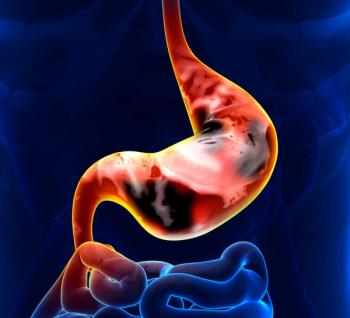
Colorectal Cancer Mortality Rates Increasing in Younger White Patients
Mortality from colorectal cancer has decreased since 1970 in young black patients aged 20 to 54, but has increased in white patients since 1995 in those aged 30 to 39 years and since 2005 in those aged 40 to 54 years after decades of decreasing.
Mortality from colorectal cancer (CRC) has decreased since 1970 in young black patients aged 20 to 54, but has increased in white patients since 1995 in those aged 30 to 39 years and since 2005 in those aged 40 to 54 years after decades of decreasing, according to a research letter
Rebecca L. Siegel, MPH, of the American Cancer Society in Atlanta, Georgia, and colleagues, wrote that these “disparate racial patterns conflict with trends in major CRC risk factors like obesity, which are similar in white and black individuals,” and that the “increased mortality is particularly unexpected among those aged 50 to 54 years, for whom screening has been recommended since the 1970s.”
The researchers obtained CRC mortality rates per 100,000 population from 1970 to 2014 from the SEER Stat database. Data obtained was for individuals aged 20 to 54 years and mortality data was from causes reported on death certificates.
From 1970 to 2014, 242,637 people died from CRC. Median age at death was 49 years. Overall, CRC mortality rates declined in those aged 20 to 54 from 6.3 per 100,000 in 1970 to 3.9 per 100,000 in 2004. However, rates then increased by 1% annually to 4.3 per 100,000 in 2014.
Data revealed that this increase in mortality occurred only in white individuals, where mortality rates increased by 1.4% annually from 3.6 per 100,000 in 2004 to 4.1 per 100,000 in 2014. Conversely, black individuals saw decreases in mortality rates from 8.1 per 100,000 in 1970 to 6.1 per 100,000 in 2014.
Throughout the entire study period, black individuals had decreasing mortality rates among those aged 20 to 49; since 1993, mortality rates also decreased among those aged 50 to 54. In contrast, mortality rates increased for white individuals aged 30 to 39 from 1995 to 2014 and for those aged 40 to 49 and 50 to 54 from 2005 to 2014.
“This study is limited by its ecologic nature and inaccuracies in about 5% of all death certificates listing CRC as the underlying cause of death,” the researchers wrote. “Escalating mortality rates in young and middle-aged adults highlight the need for earlier CRC detection through age-appropriate screening and more timely follow-up of symptoms.”
Newsletter
Stay up to date on recent advances in the multidisciplinary approach to cancer.
















































































